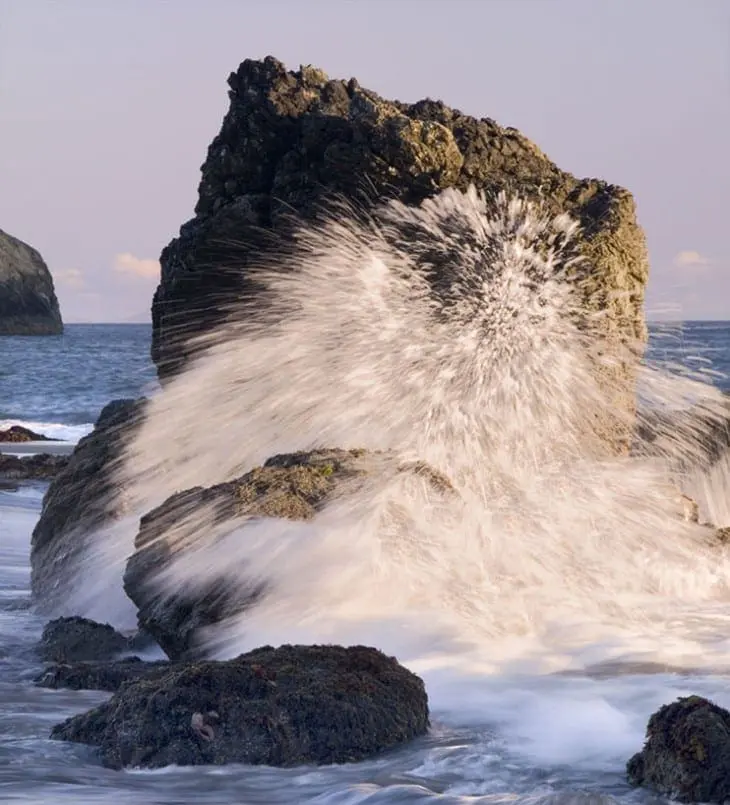How to Get Great Shots of Water

Without water, life as we know it wouldn’t exist. Humans are dependent upon it, plants must have it, aquatic life needs it. I know I state the obvious, but have you ever considered water to be a great photographic resource? Be it a running river, ocean waves, reflective puddle, or an offshoot such as a child playing with a hose, a backlit fountain, or a dog shaking himself dry after a swim, there are a myriad of opportunities to create magnificent images that relate to water.
There are a number of ways to make your water shots stand out. The first has to do with shutter speeds. The faster the shutter speed, the more defined each drop will become. The faster the water is moving, the higher shutter speed that’s necessary to freeze the action. On the other hand, an exaggerated slow shutter speed can create a cotton candy effect on the water. For example, if you’re photographing a fast running waterfall, a shutter speed of 1/1000 is necessary to freeze the motion of the drops. But if you add neutral density filters allowing you to shoot at a shutter speed of 1/2 second or slower, the water will take on a cotton candy effect and you may even reveal the rocks over which the water flows.

Another way to make your water shots better is to shoot late or early in the day. The reason for this is twofold. If you’re shooting a frontlit subject, the golden colors of sunrise and sunset bathe your subject in a pleasing warmth. The other reason is to create very dramatic backlit shots. Every drop of water becomes visible and prominent in the image. Each drop takes on a translucent quality making every drop a strong part of the image. Fountains, kids at fire hydrants, and splashing dogs are but a few ideas from where to start.

Finally, consider the use of a polarizer to eliminate reflections and reduce glare. Not only will the colors be more saturated, the overall contrast of the image will be softened if the points of glare and reflectivity are removed. Simply rotate the polarizer while looking through the viewfinder until the glare is reduced. Depending on the angle at which your subject is to the camera, the effect may be very strong or barely visible.
Images and text © Russ Burden 2007.



